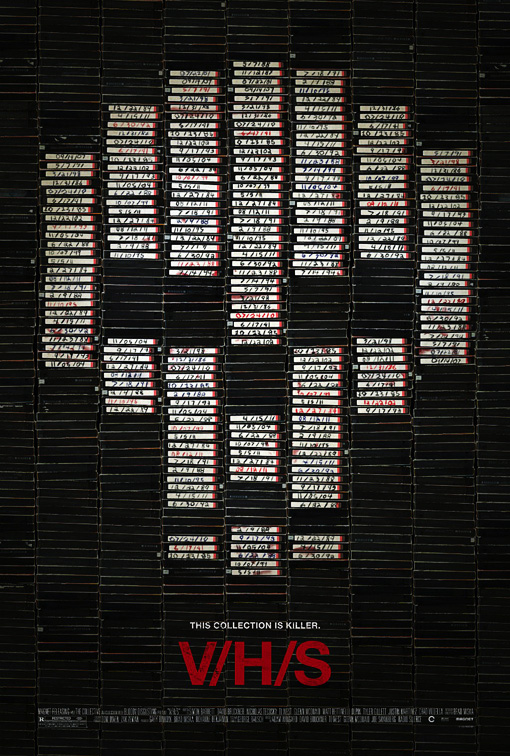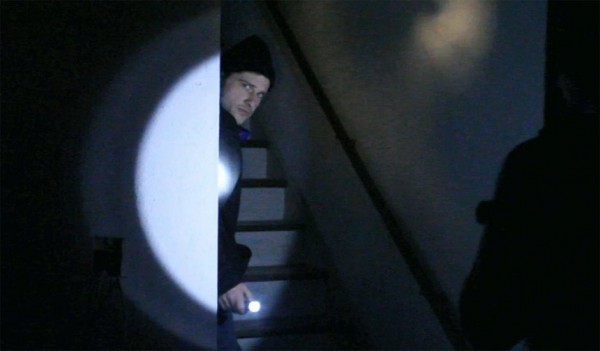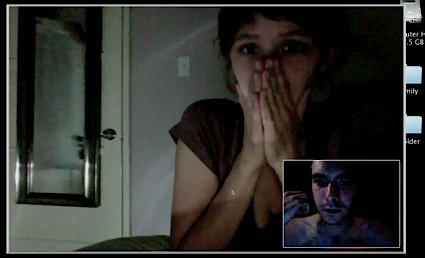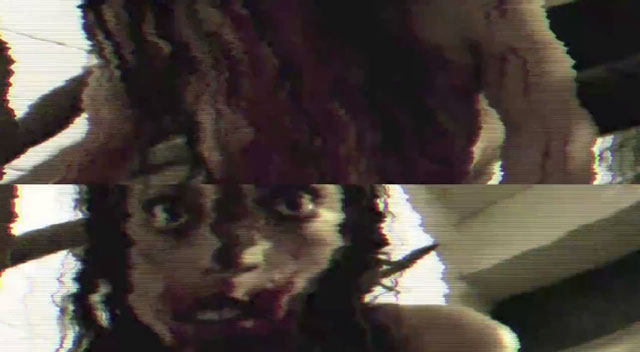 I like a good horror novel as much as the next guy, but there is just something about the power of the short-story format that jibes so stabbingly with the genre. After all, the most basic and pure horror incarnation is the campfire ghost story. It makes sense. The parallels between horror and comedy run deep, and just like a good joke, sometimes all a good horror story requires is a quick set-up followed promptly by an unexpected ending. Not all spooky ideas can be or should be stretched out to a 70,000-word novel or a feature-length film. From Poe to Lovecraft to EC Comics to Night Gallery to King to Barker to The X-Files, some of the best pieces the horror genre has ever offered up came in short form. For this reason I have always had a fascination with – and soft-spot for – horror anthology films.
I like a good horror novel as much as the next guy, but there is just something about the power of the short-story format that jibes so stabbingly with the genre. After all, the most basic and pure horror incarnation is the campfire ghost story. It makes sense. The parallels between horror and comedy run deep, and just like a good joke, sometimes all a good horror story requires is a quick set-up followed promptly by an unexpected ending. Not all spooky ideas can be or should be stretched out to a 70,000-word novel or a feature-length film. From Poe to Lovecraft to EC Comics to Night Gallery to King to Barker to The X-Files, some of the best pieces the horror genre has ever offered up came in short form. For this reason I have always had a fascination with – and soft-spot for – horror anthology films.
The strength and appeal of the anthology film structure is also its most inherent weakness. No one expects every short story in a literary collection to be great, and it hardly matters if they aren’t, because books are something we pick up and put down, over days, weeks, months, hell, even years. And we all read at different speeds. But movies are a single entity and experience that unfold at a fixed pace. Despite its episodic and often unrelated construction, at its finest – with films like Creepshow or the original Tales From the Crypt – an anthology film manages to engender a sense of completion in the same way a great album does, providing a full beginning-to-end experience. But is it worth your time to sit through a 90-minute collection of shorts if you only end up liking one or two of them? How you answer that question will determine how excited you should get about V/H/S. Or if you will want to bother seeing it at all. The film is a mixed bag, with its segments ranging from ‘outstanding’ all the way down to ‘dreadful.’ For my money it is most definitely worthy of your time, but, as I said, I’m a fan of the format.
A necessary convention of anthology horror films is the use of bookends or a through-line story that gives at least some semblance of cohesion to the disparate parts. Creepshow gave us a little boy paging through a horror comic book. Trick’r’Treat took a Short Cuts-esque interweaving-storylines approach. Night Train To Terror found God and Satan hanging out on a train, discussing the lives of mortals. In V/H/S our prologue and through-line gives us a group of petty crooks breaking into a seemingly empty house to retrieve a mysterious VHS tape. In the house they find a dead man sitting in front of a TV and VCR surrounded by tapes. As the crooks search the house, one-by-one they each take a turn popping a tape into the VCR and discovering a found-footage tale of terror. If an anthology film is already a gimmick, V/H/S is a gimmick within a gimmick. It is actually the melding of three distinct subgenres: anthology, found-footage, and mumblegore (itself of meld of horror and the so-named ‘mumblecore’ style). Adding yet another gimmick to the mix, each segment is written/produced/directed by different artists.

As an overall film V/H/S does not work that well. This is partially because of the wild swing in quality of the various segments, but also because the aforementioned prologue/through-line is one of the weaker parts. Directed by Adam Wingard (who directed the fantastic You’re Next) this framework story quickly manages to feel too long each time we cut back, and by the middle of the film I had completely lost interest in what was happening with the irrelevant crooks — I just wanted to get to the next short! I have a hard time even thinking about V/H/S as a whole piece. Doing so does both a disservice to the excellent segments, and gives an undeserved pass to the poor ones. So let’s do this right…
V/H/S Breakdown
The films-within-the-film kick off with a blast of testosterone in “Amateur Night,” written by David Bruckner & Nicholas Tecosky and also directed by Bruckner (The Signal), which features three drunk and horny college dudes who take a pair of spy-cam glasses out on their pub crawl. We see the events of the evening through the POV of the nerdiest member of the trio, who has been assigned the task of wearing said spy glasses. When the trio take a weird wild-eyed girl back to their motel room, they are in for an unpleasant treat. “Amateur Night” represents what works about short-form horror very well, because there is little substance to the idea, plus the nauseatingly hectic style of the camerawork combined with the fratty over-acting of the actors becomes extremely obnoxious almost immediately. But just when things start to get too irritating, we’re hit with the horror element and shit gets nutty fast, building up to a very cool ending. And, hey, that’s what you want out of a horror short. “Amateur Night” also demonstrates the interesting quirk of these second-generation ‘found-footage’ films, which look as though they’re shot by nobodies in their backyards – like Blair Witch – but contain complicated and top-notch special FX and filmmaking technique.
Rating: 




Out of a Possible 5 Stars
“Second Honeymoon,” about an awkward couple on an awkward road-trip who are stalked by a hoodie-clad girl, comes from writer-director Ti West. If you know anything about West’s other films, like House of the Devil or The Innkeepers, you know to expect a slow-bordering-on-glacial pacing. West is an acquired taste, and you can either get into his approach or you can’t. I got into Innkeepers, but I couldn’t get into this. When we’re given so little time for each short, spending minutes on end watching the couple – played by Joe Swanberg and Sophia Takal – fart around realistically (ie boringly) at various tourist locations just felt like a waste of screen-time to me. As I said, a horror short is a lot like a joke, so “Second Honeymoon” could be viewed as something of a ‘shaggy dog story,’ but I found the “punchline” rather uninspired. To their credit, Swanberg and Takal play their roles well.
Rating: 




Out of a Possible 5 Stars
“Tuesday the 17th,” directed by Glenn McQuaid (I Sell the Dead), about a group of doomed twenty-somethings heading into the woods to party, is the only segment in V/H/S that I found actively bad. After the prologue and “Amateur Night” I had already taken in as much inane bickering and “woo, party!” shenanigans as I could. This, of course, is another cautionary pitfall for anthology films: redundancy. The ‘found-footage’ gimmick that McQuaid employs is visually interesting — the doomed idiots find themselves stalked by a Slasher/entity, who causes tracking interference over his/its own image whenever he/it appears. But this gimmick is hardly interesting enough to buoy the story and annoying characters. In an otherwise inventive anthology, “Tuesday” leaves you with the feelings of, “Really? That’s it?”
Rating: 




Out of a Possible 5 Stars

“The Sick Thing That Happened to Emily When She Was Younger” comes from Joe Swanberg (who acted in Ti West’s segment) and writer Simon Barrett. More than any of the other chapters in V/H/S, “Sick Thing” utilizes all its gimmicks to the fullest extent. The entire thing is shot in a Skype-like chat program, which is both brilliant and completely impossible to sustain for anything longer than a short film. Which is perfect here. The story spans numerous late-night calls as Emily (Helen Rogers) calls her older boyfriend James (Daniel Kaufman) whenever she becomes scared by the seemingly supernatural things occurring in her apartment. Not only is it the funniest segment in the film, but it is also the scariest. It is actually a little surprising how effective the limitations of the Skype windows proves to be. And it is great being able to see James’ reactions the whole time too. Plus, the unfolding story becomes more bizarre than its set-up would imply.
Rating: 




Out of a Possible 5 Stars
The final chapter is “10/31/98,” written, directed, and mostly starring the on-line collective known as Radio Silence (Matt Bettinelli-Olpin, Tyler Gillett, Justin Martinez, Chad Villella). The short re-uses the spy glasses gimmick from “Amateur Night,” this time with a member of a foursome heading to a Halloween party placing a ‘nanny-cam’ in the head of his costume — though unlike “Amateur Night,” Radio Silence allows the visuals to play out smoothly so we don’t want to poke out our eyes. The story sends the foursome to a party that turns out to be completely empty, which our heroes mistake to mean it must be a haunted house schtick, and thus begin meandering through the increasingly creepier and creepier home. “10/31/98” is by far the most elaborate and technically impressive short in V/H/S; a logical choice to close out the film. Though it lacks the originality of “Sick Thing,” it is the segment I’m most interested in watching again, simply because of the technique on display — it is easily the most entertaining section of the film. It is also the short that made me want to see a feature from its filmmakers most eagerly.
Rating: 




Out of a Possible 5 Stars
So there you have it. Take it as you will. V/H/S is one of the best horror films of 2012; a unique, clever and scary ride — if only in parts.
